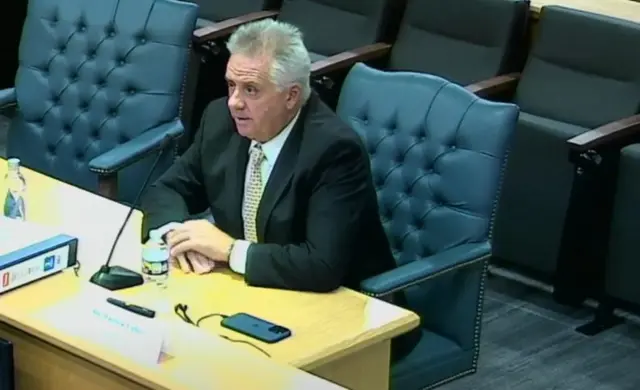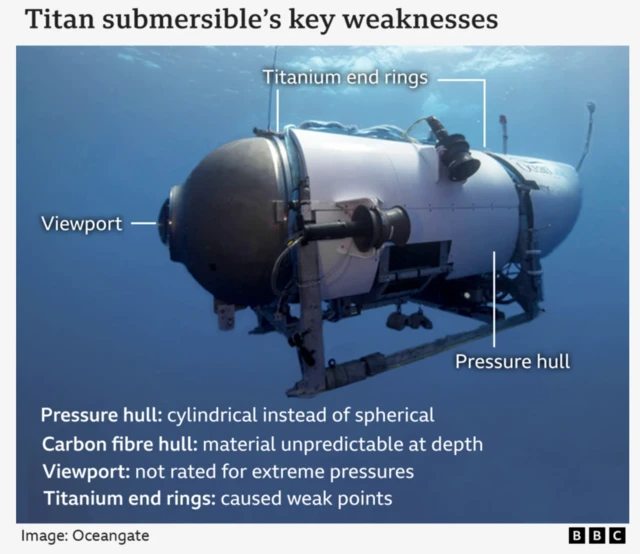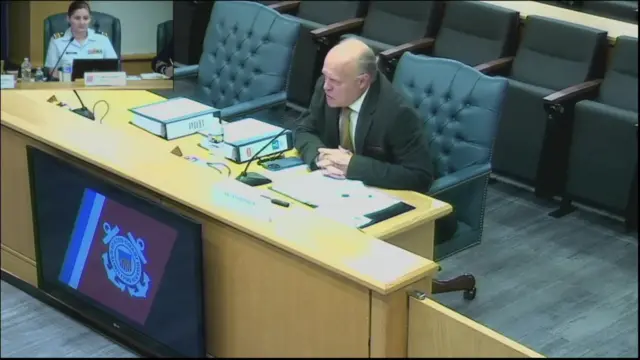Titan sub 'not ready for the prime time' - Laheypublished at 18:50 BST 20 September 2024
Lahey tells the committee about two submersibles OceanGate purchased which he was involved in building, before he later established his company.
He says were both reviewed by independent bodies in a process known as "classing" but adds that he does not know if OceanGate continued to certify them.
"I don't know the condition of those subs any longer, and nor do I know if they're still classed," he says.
He adds that during a sailing vacation to the Bahamas in 2019, he coincidentally happened to get a tour of the Titan sub that later imploded.
Wearing a T-shirt for his company at the bar, someone saw it and approached him and offered to show the sub being tested.
"I wasn't particularly impressed by what I saw," he says.
"It looked to me like a lot of the stuff was not quite ready for the prime time," he says, adding that he told the OceanGate team about his concerns.
 Image source, US Coast Guard
Image source, US Coast Guard





